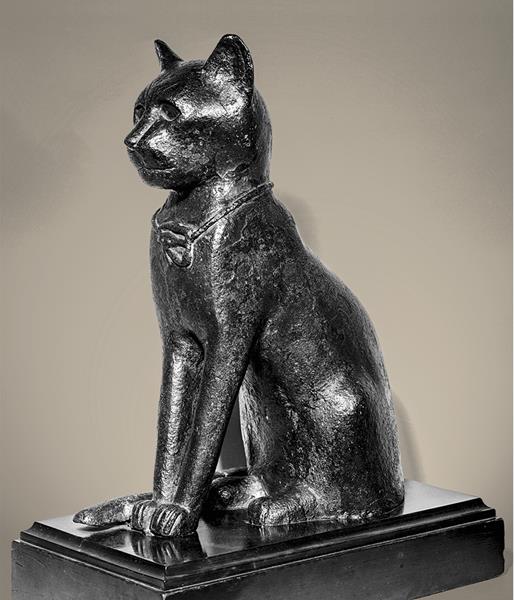
The Getty Museum in Los Angeles announced this past March that the Egyptian cat statuette in its collection is a genuine ancient artifact after all. Acquired by J. Paul Getty in 1955, it was long suspected to be a forgery or imitation and, thus, was never put on display. Measuring almost 13 inches tall, the bronze statuette represents the Egyptian goddess Bastet as a sitting cat with a wedjat (sacred eye) amulet pendant around her neck.
Following the 1887–1889 Swiss excavations at Tell Basta—the epicenter of Bastet’s worship, about 35 miles north of Cairo—the European art market was flooded by cat representations, which further drove the demand for charming feline antiquities. This inevitably led to a market for forgeries, and the Getty cat was believed to be one of these imitations—likely because of its rather primitive style and unusually even and shiny surface.
But when specialists removed the modern wooden base and looked inside the hollow bronze, they found a genuinely aged surface with corrosion built over a long period of time. They also discovered a lump of clay stuck in the cat’s head—a remnant of ancient molding and casting that was dated between 1,700 and 2,700 years ago. Metal analysis revealed high concentration of lead in the bronze alloy that is consistent with other, demonstrably original castings from ancient Egypt. Finally, the current outer surface is clearly the result of a 19th-century aggressive treatment with abrasives and subsequent application of a coating with a mixture of beeswax, paraffin, and oil.
Already a library member? Log in here.
Institution user? Log in with your IP address.

